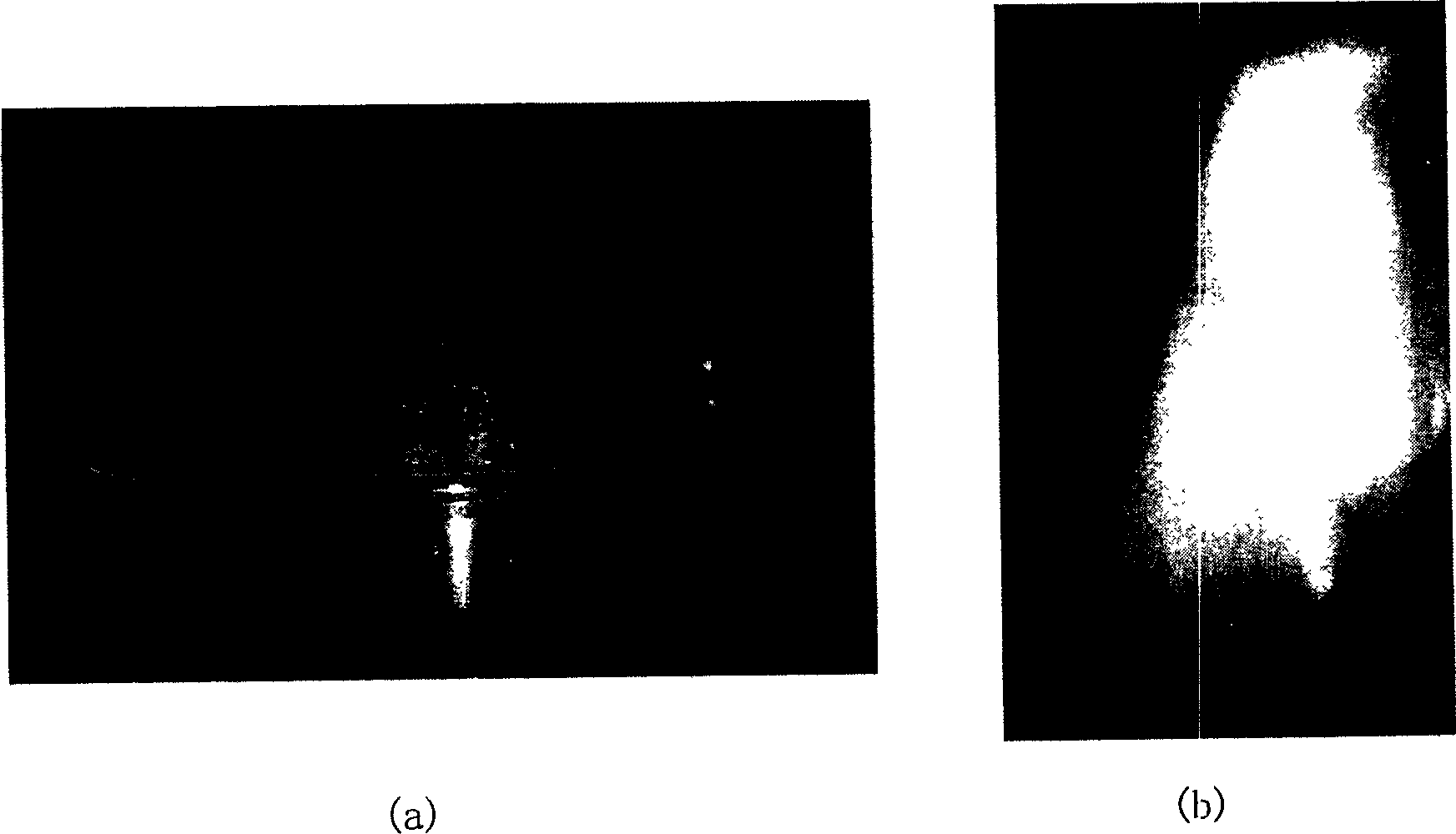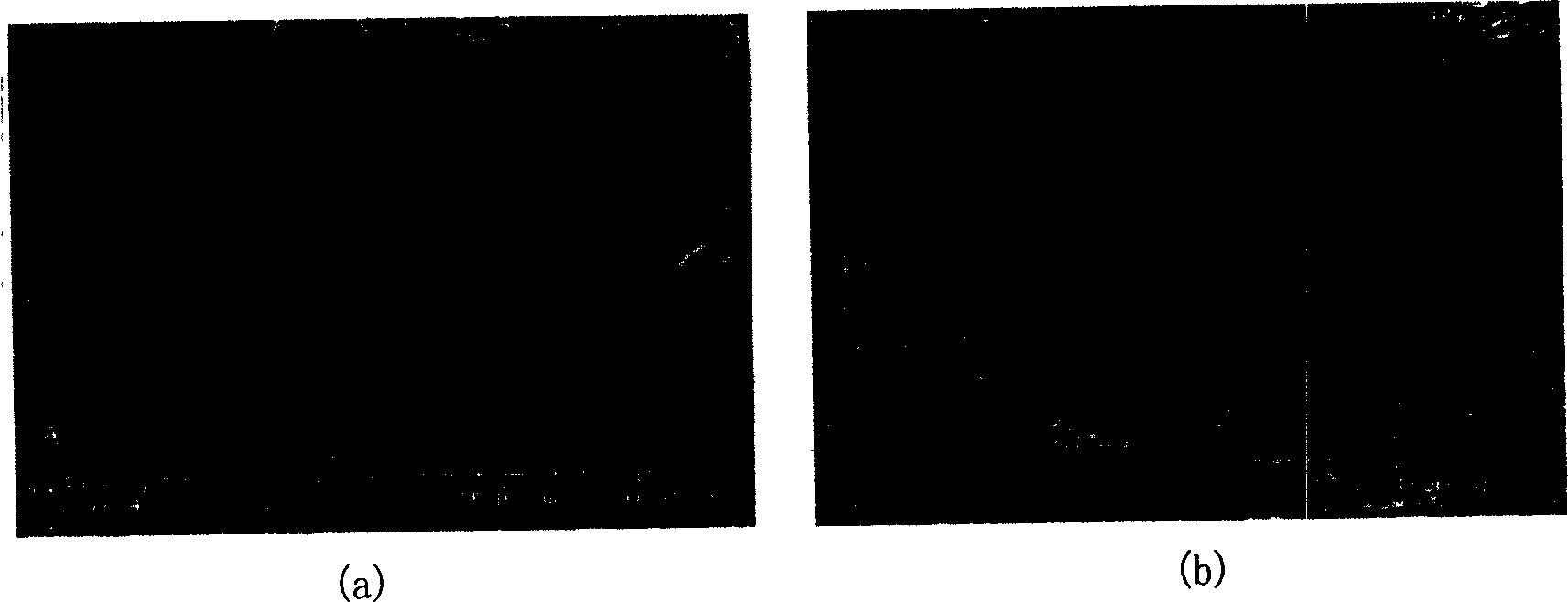Preparation of porous sericin sponge material
A silk fibroin, three-dimensional porous technology, which is applied in the field of natural biological macromolecules-silk fibroin for preparing three-dimensional porous materials, can solve the problems of uniformity, flexibility, insufficient porosity and water absorption of the preparation process, and achieves low cost and high cost. The effect of biosafety, simple process
- Summary
- Abstract
- Description
- Claims
- Application Information
AI Technical Summary
Problems solved by technology
Method used
Image
Examples
Embodiment 1
[0028] Example 1: Immerse about 10 g of silkworm cocoons without chrysalis in 2L of 0.5% NaHCO 3 solution, stirred and boiled for 55min, then removed and washed with deionized water. After repeating the above operation once, dry the silk at 65°C for 24 hours and put it in a desiccator for later use.
[0029]3 g of the degummed silk after the above treatment was weighed and dissolved in 100 mL of BrLi solution with a concentration of 9.5 mol / L, and dissolved under constant temperature and low speed magnetic stirring at 45°C. The protein solution was poured into a cellulose dialysis bag, and dialyzed with deionized water for three days to obtain a silk protein aqueous solution with a concentration of 2.32%, and the silk protein concentration was adjusted to 1.0%.
[0030] Take 5mL of the above silk protein solution, add 3mL of n-butanol dropwise under a constant-temperature water bath with a stirring rod at a constant speed at 25°C, stabilize it for 2 minutes, pour it into a pl...
Embodiment 2
[0031] Embodiment 2: About 30g waste silk is immersed in 3L 0.5%Na 2 CO 3 solution, stirred and boiled for 45min, then removed and washed with deionized water. After repeating the above operation twice, the silk was dried at 65°C and then put into a desiccator for later use.
[0032] 6 g of degummed silk after the above treatment was weighed and dissolved in 100 mL of BrLi solution with a concentration of 10.0 mol / L, and dissolved under constant temperature and low speed magnetic stirring at 45°C. Pour the protein solution into a cellulose dialysis bag, dialyze with deionized water for three days to obtain an 8% silk protein aqueous solution, and then adjust the silk protein solution concentration to 5% by dilution.
[0033] Take 10 mL of the above silk protein solution, add 5 mL of acetone dropwise with constant stirring in a constant temperature water bath at 25°C, stabilize for 2 minutes, and put it into a low-temperature refrigerator for 24 hours at -30°C. After the sil...
Embodiment 3
[0034] Example 3: Immerse about 20 g of waste silk into 2 L of 0.5 mol / L boric acid-borax buffer solution, stir and boil for 60 min, take it out, and wash it with deionized water. After repeating the above operation once, dry the silk at 65°C and put it in a desiccator for later use.
[0035] 12 g of the degummed silk after the above treatment was weighed and dissolved in 100 mL of LiBr solution with a concentration of 10.0 mol / L, and dissolved under constant temperature and low speed magnetic stirring at 45°C. The protein solution was poured into a cellulose dialysis bag, and dialyzed with deionized water for three days to obtain a silk protein aqueous solution with a concentration of 11%, and the silk protein concentration was adjusted to 10% by dilution.
[0036] Take 10mL of the above silk protein solution, add 10mL of tert-butanol dropwise in a constant temperature water bath at 25°C, stabilize it for 2 minutes, pour it into a ball and put it into a low-temperature refrig...
PUM
| Property | Measurement | Unit |
|---|---|---|
| porosity | aaaaa | aaaaa |
| elastic recovery rate | aaaaa | aaaaa |
| water absorption | aaaaa | aaaaa |
Abstract
Description
Claims
Application Information
 Login to View More
Login to View More - R&D
- Intellectual Property
- Life Sciences
- Materials
- Tech Scout
- Unparalleled Data Quality
- Higher Quality Content
- 60% Fewer Hallucinations
Browse by: Latest US Patents, China's latest patents, Technical Efficacy Thesaurus, Application Domain, Technology Topic, Popular Technical Reports.
© 2025 PatSnap. All rights reserved.Legal|Privacy policy|Modern Slavery Act Transparency Statement|Sitemap|About US| Contact US: help@patsnap.com


